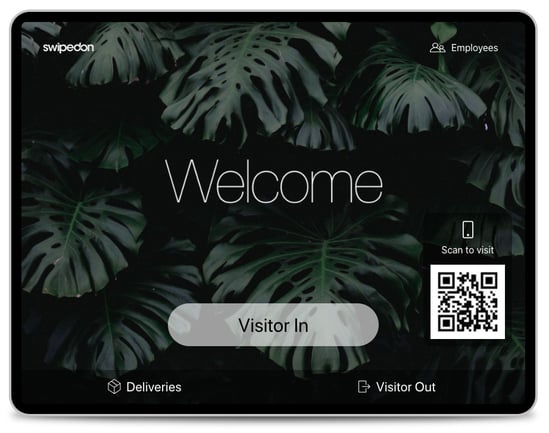Why Tourism Companies Should Use a Visitor Management System

The tourism industry took a massive hit during the global pandemic, as countries across the globe went into lock downs. But there is hope for the industry as people begin to holiday nationally and internationally.
Data shows that revenue in travel and tourism continues to grow after the major pandemic slowdown. It’s expected to hit USD $716.80 billion during 2022, with a compound annual growth rate (CAGR) of 8.46% from 2022 to 2026.
A range of submarkets - transportation, accommodation, recreation and entertainment, food and beverage, events and conferences, and travel services - have varying factors that should be taken into consideration when planning for this renewed growth. However, one focus remains central. All businesses within the travel and tourism industry must cater to visitors.
In the accommodation segment, with hotels alone, the number of guests is projected to grow to 1.3 billion within the next four years. Without overcoming the challenges associated with this increasing volume, operations disruptions are inevitable.
With a wide range of applications across the travel and tourism industry, visitor check-in software can help provide a seamless and sustainable experience. In this article we'll break down the challenges facing the tourism sector and how a visitor management system can help with operations.
1. Encourages Collaboration Between Services
The travel and tourism industry consists of a complex web of services. Many interconnected functions must work together to ensure visitors have the best experience possible. This involves working with various travel agencies, tour operators, suppliers, and destination marketing organizations.
Coordination between the different sectors is complex as many have their own set of protocols. This means they need a workforce that understands the nature of the tourism industry through in-depth education and training.
Improving collaboration calls for regular communication between public and private sectors to ensure everyone is aligned on one goal: providing tourist visitors with a seamless experience.
For example, government entities can improve collaborative partnerships with businesses and other levels of government to support people and skills that will help bring about strategic solutions that enhance tourism employment.
Collaborative initiatives between educational institutions and HR departments can communicate knowledge, concepts, and strategies unique to the tourism industry and ensure the competence and effectiveness of staff. This way, they can identify important skills and training requirements. Apprenticeships can also play a huge factor in improving industry knowledge and expertise.
2. Assists in Safety and Security
Safety will always be the top consideration for travellers and has been a particular concern for the past few years.
Tourists prefer visiting countries considered stable and safe. Incidents such as terrorist attacks, political unrest, civil disorder, and natural disasters may change a visitor’s decision to go to a particular destination. Most recently, issues related to the pandemic have been a major source of concern that affect traveller confidence. Such challenges affect the ability of businesses to operate at their highest efficiency.
Data security is also a concern among travellers. With the growing use of online bookings, guests risk exposing their personally identifiable information (PII), including passport information, email addresses, phone numbers, and credit card details to hackers.
Increase digitalization in using secure technologies for all processes to provide a solution to growing travel security concerns. The increased adoption of electronic data management technology is critical in strengthening security systems.
Online bookings are now the norm. The best way to earn guest confidence is by investing in highly secure systems that ensure private information won’t land in the hands of malicious actors.
Technology and innovative processes, including advanced data analytics with background checks for determining travel eligibility, can provide increased transboundary accountability and greater security among travellers.
3. Helps with International Compliance
International regulatory concerns, including visa issuance, can create challenges for the tourism industry. Tourists are more likely to travel to a destination with more lenient and streamlined processes.
In some destinations where tourism infrastructure needs improvement, delays in issuing licenses and approvals are also a challenge for businesses. Destinations lacking proper infrastructure affect travel confidence among tourists.
Use Compliant Software and Technology
Travel regulations are much stricter than in years past. Businesses in the travel sector must ensure their systems and processes are compliant to reduce the risk of violations. The tech revolution has invaded the travel world, leading to the development of applications and smart products that aim to make air travel and border crossings as seamless as possible. But this also means ensuring these technologies are developed using compliant software to ensure safety and security.
For travel agencies and government offices, collaboration in visa processing can be hastened by using the latest technology that synchronizes data, including travel records, passport information, and other related documents that factor into visa issuance.
Companies in the business of building tourism infrastructure must have a centralized system that allows them to segment regulatory requirements for both offline and online activities. This strategy will help in fast-tracking licenses and permits.
4. Is a Sustainable (and Modern) Solution
The tourism industry is a major contributor to global greenhouse gasses (GHGs), accounting for 8% of emissions, which is much higher than previously estimated. Many factors contribute to this footprint.
Of all segments, transportation, including air traffic, has the greatest effect. The tourism sector also has high energy consumption levels, especially in hotels. This has led to calls for a significant reduction in carbon emissions to maintain sustainable development.
Sustainability concerns can best be addressed by using environmentally-friendly systems whenever necessary. A visitor management system is one effective way to address this, particularly in recreational and protected areas. For one, it supports careful guest management. By monitoring visitor numbers, leisure activities, and guest behavior, tourism authorities and planners can better manage protected areas by limiting capacities.

Going digital also means using less paper. With 40% of harvested wood used to make paper products, paper use contributes to global deforestation, water and air pollution, and soil erosion. Going paperless helps address these sustainability concerns.
Featured Image by Ivana Cajina on Unsplash







 Germany - Deutsch
Germany - Deutsch